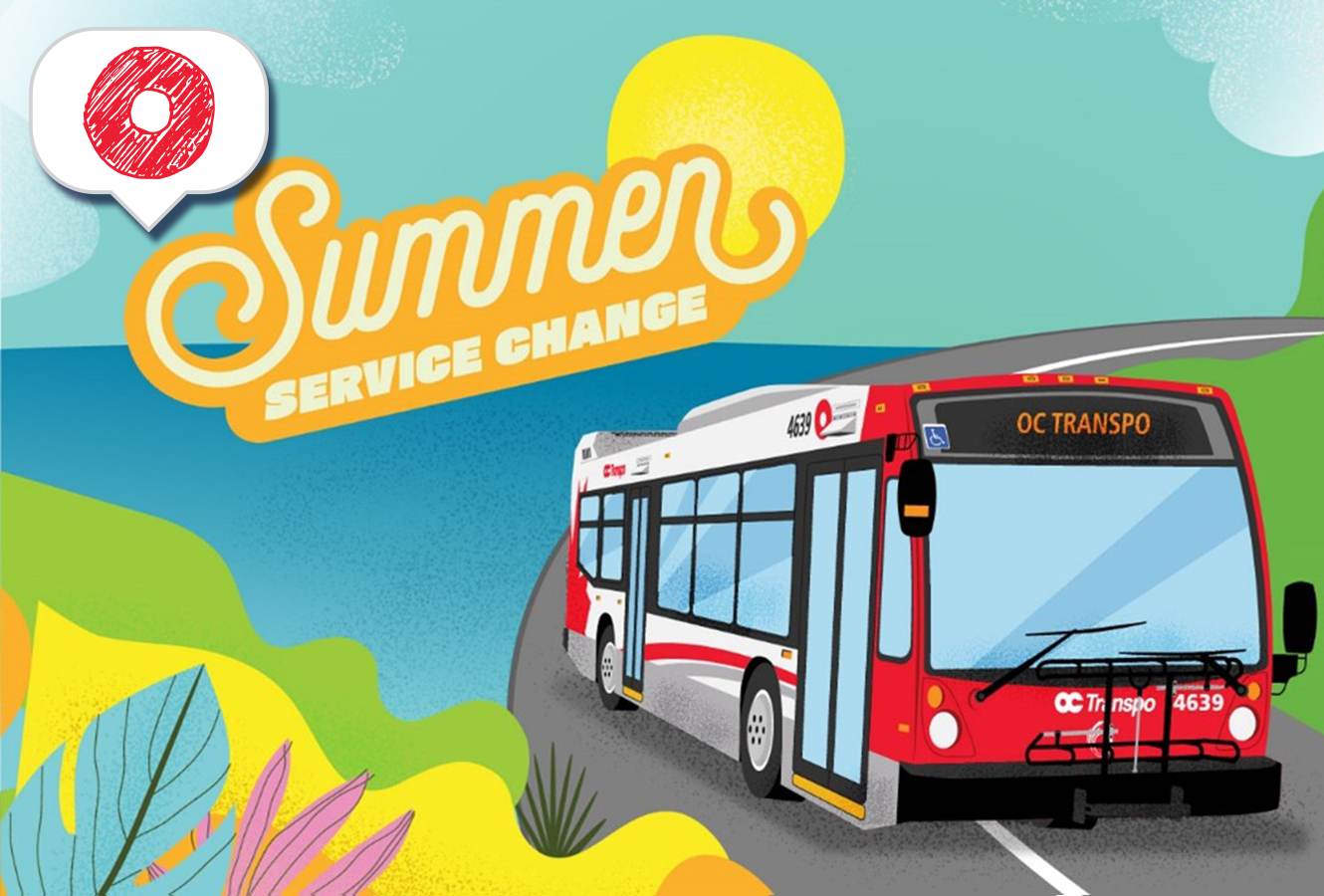OC Explained: Service Changes

Our bus network is constantly being adjusted to best match new and changing travel patterns and to provide the best possible service for customers.
Our key tools to recalibrate our system to match travel demands along with matching seasonal ridership trends, is a service change. This process allows us to assign our resources in a way that is the most helpful for customers.
Come behind the scenes to understand our service change process. It’s an ongoing cycle of monitoring, planning, scheduling and making adjustments to provide you with the best possible service.
What’s a service change?
Simply put, a service change is a date when our bus network is modified to better serve our customers based on travel patterns, customer feedback, and operating conditions. The service change process allows us to:
- Bolster popular routes
- Scale back routes that are experiencing lower demand than usual
- Introduce transit service to new neighbourhoods and growing areas.
- Make modifications to existing service based on feedback or operational requirements
There are four service changes every year: one in the spring, summer, fall and winter. While a service change may just be a date on a calendar to some, the final result is only the tip of the iceberg.
A service change is planned months, and sometimes years in advance such was the case when planning detours during O-Train construction. It all starts with gathering data and forecasting future travel demands.
Creating a plan
On a typical day, 580 buses travel throughout Ottawa serving 187 routes and 5782 stops. With the help of 1390 operators, we deliver 8256 bus trips per day. All these resources are carefully allocated to a specific plan that typically remains in place for three-months.
Planning bus service begins months in advance and takes into consideration ridership trends, seasonal travel demands, major events, customer feedback, and operating conditions.
Once we have forecasted our future bus network, we will assign vehicles and operators to each route.
Implementing Changes
Two months before changes take place, all of OC Transpo mobilizes on a single collective goal of ensuring the service change is seamless.
This process includes members of Service Planning, Fleet Services, Customer Service, Scheduling, Field Operations, Transit Operations Control Centre,customer communications, and much more.
This process won an award in 2017 for OC Transpo’s planning and implementation of complex service change requirements leading up to the closure of the Transitway to prepare for the construction of O-Train Line 1.
As we get closer to the service change, meetings increase in frequency from weekly to daily or more often.
Before we can launch a service change there is a lot of work that goes on behind the scenes.
A small portion of the work includes:
- Printing new bus stop signs, schedules, and other customer signage
- Update real-time customer information tools
- Communicate updates to customers through news items, public service announcements, and social media
Monitoring Service
We monitor ridership levels on all bus routes using an on-board automatic passenger counting system and by collecting observations from customers and frontline staff.
Ridership is actively monitored to help prevent chronic crowding on routes across our transit system.
When over crowded trips are observed, we’ll do our best to increase capacity when possible by actively assigning a larger bus or by adding another trip.
If ridership shifts or grows on a particular route or trip to the point of requiring additional capacity to continue meeting our standards, changes are made at the next available opportunity which is typically the next service change.
Throughout the process, we are gathering feedback from customers, Councillors and operational observations from frontline staff.
This process allows us to continuously provide the best possible service for our customers with the resources we have available.
To find out more about the latest service change, please visit octranspo.com.
Was this article helpful? Do you have a story to suggest? Let us know by emailing thenextstopblog@ottawa.ca

